Unveiling the Mysteries of the Terracotta Army in Chinese Mythology
Step into a world filled with intrigue and ancient legends as we delve into the enigmatic realm of the Terracotta Army. These lifelike clay soldiers, discovered in the depths of China, have captured the imagination of both scholars and tourists alike. But beyond their awe-inspiring presence lies a deeper significance rooted in Chinese mythology. Join us on a journey as we unravel the mythical origins, explore the intricate details of the army, and uncover the modern-day implications of this remarkable archaeological find. Prepare to be mesmerized by the secrets of the Terracotta Army, waiting patiently to be revealed.
Contents
- The Mythical Origins
- The Discovery of the Terracotta Army
- The Significance in Chinese Mythology
- The Intricate Details of the Army
- Preservation and Excavation Challenges
- Modern-Day Implications
- The Terracotta Army’s Legacy
- Conclusion
- Frequently Asked Questions
- References
-
Frequently Asked Questions
- 1. What is the significance of the Terracotta Army in Chinese mythology?
- 2. How were the warriors of the Terracotta Army created?
- 3. What is the purpose of the Terracotta Army in Chinese mythology?
- 4. What do the warriors of the Terracotta Army symbolize?
- 5. How many warriors are there in the Terracotta Army?
- 6. What are some unique details about the individual soldiers of the Terracotta Army?
- 7. Why were horses included in the Terracotta Army?
- 8. What weapons and armor did the soldiers of the Terracotta Army possess?
- 9. What challenges were faced during the preservation and excavation of the Terracotta Army?
- 10. What is the cultural and economic significance of the Terracotta Army today?
- References
- Read More
The Mythical Origins
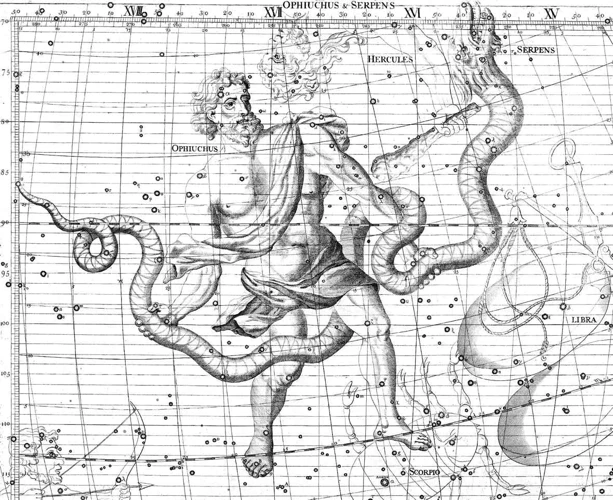
According to ancient Chinese mythology, the origins of the Terracotta Army can be traced back to the legendary ruler, Qin Shi Huang. As the first emperor of China, Qin Shi Huang embarked on a quest for immortality, driven by his belief in the afterlife. It is believed that he commissioned the creation of the army as a means to protect him in the underworld. Legend has it that a celestial vision revealed to Qin Shi Huang the presence of hidden messages in the planetary symbols, guiding him to craft an army of clay soldiers. These soldiers were believed to come to life in the afterlife, ready to defend and serve their emperor. Although steeped in mythical folklore, it is fascinating to consider the possibility of the emperor’s connection to other ancient civilizations, such as Egyptian folklore and mythical creatures, or even the mystery of comets’ path and behavior. These threads of connection weave a tapestry of imagination and wonder, inviting us to explore the intertwining of cultures and legends throughout history.
The Discovery of the Terracotta Army
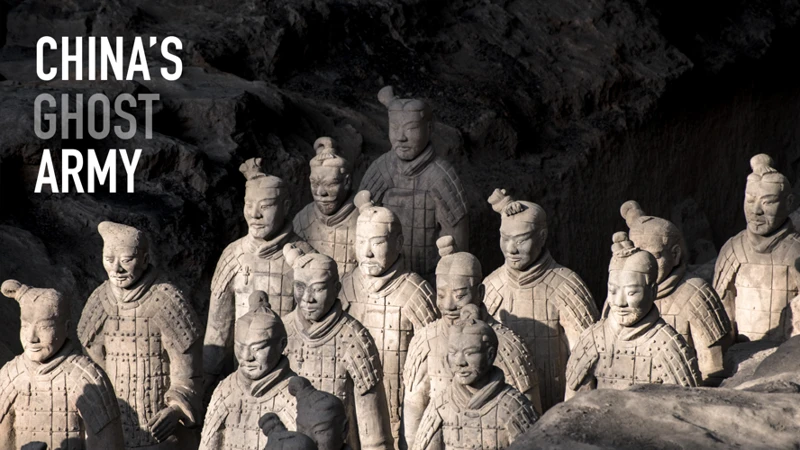
The discovery of the Terracotta Army in Xi’an, China, was nothing short of astonishing. In 1974, a group of local farmers stumbled upon the army while digging a well in a field. Little did they know that they had unearthed one of the most remarkable archaeological finds in history. Excavations soon began, and the true scale and complexity of the army were gradually revealed. The site consisted of three enormous pits, each housing thousands of intricately crafted terracotta soldiers, horses, and chariots. The soldiers were arranged in battle formation, adding to the awe-inspiring nature of the discovery. The meticulous attention to detail in each soldier’s appearance and attire further emphasized the significance of the find. It is believed that the army was created using molds, allowing for a certain degree of mass production. The sheer magnitude and level of organization involved in the army’s creation indicate a highly advanced civilization. To this day, the ongoing archaeological work at the site continues to uncover new insights and surprises, making it a fascinating area of study for historians, archaeologists, and enthusiasts alike. The discovery of the Terracotta Army not only offers a glimpse into ancient Chinese history but also serves as a testament to the ingenuity and craftsmanship of the Chinese people from centuries ago. Its historical significance and cultural value make it a captivating topic that continues to spark curiosity and intrigue across the globe.
The Significance in Chinese Mythology
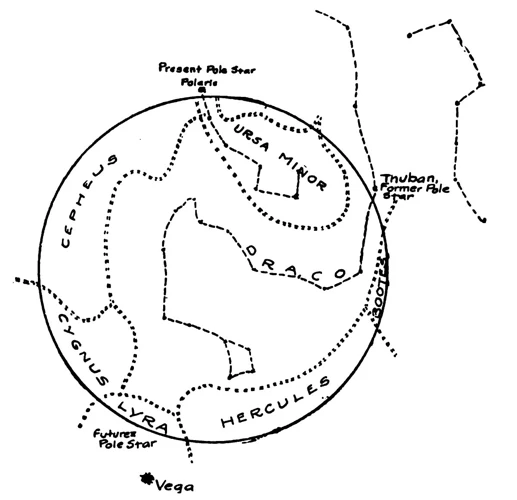
The Terracotta Army holds a significant place in Chinese mythology, symbolizing various aspects of ancient beliefs and traditions. One of the key aspects is its connection to the emperor’s quest for immortality. This quest reflects the deep-rooted belief in an afterlife and the emperor’s desire to continue his reign beyond earthly boundaries. Additionally, the army serves as protectors of the afterlife, embodying the belief that the emperor needed a strong and loyal army to navigate the challenges of the underworld. Each warrior represents a symbol of bravery, strength, and loyalty, reflecting the virtues valued in Chinese culture. The significance of the army’s creation lies in its role as both guardians and companions of the emperor, ensuring his eternal rule and legacy. The intricate details of the soldiers, such as their unique facial expressions, hairstyles, and armor, highlight their individuality and emphasize their importance in the afterlife. Explore more about the mysterious connections in Chinese mythology, like the hidden messages in planetary symbols, Egyptian folklore with mythical creatures, or even the mystery of comets’ path and behavior, to further delve into the rich tapestry of ancient beliefs and legends.
The Emperor’s Immortality Quest
The Emperor’s Immortality Quest
Qin Shi Huang, the ambitious ruler of China, was obsessed with the idea of achieving immortality. His yearning for eternal life led him on a relentless quest for the elixir of immortality and the secrets of the afterlife. Qin Shi Huang believed that in order to attain immortality, he needed protection even in death. Thus, the conception of the Terracotta Army took shape. The army consisted of thousands of intricately crafted clay soldiers, meticulously positioned to guard the emperor’s tomb. The emperor’s desire for everlasting life drove him to explore esoteric knowledge, including the study of hidden messages in planetary symbols. Through this link to the unknown, Qin Shi Huang sought to secure his immortality and ensure his triumphant existence in the afterlife. While his immortality quest may remain unfulfilled, the Terracotta Army stands as a tangible testament to the emperor’s unwavering pursuit of eternal life. It is an embodiment of his grand ambitions and a reflection of the mysteries that still surround us, be it in the realms of hidden messages in planetary symbols, Egyptian folklore and mythical creatures, or the captivating enigma of comets’ path and behavior.
Protectors of the Afterlife
The Terracotta Army, with their stoic expressions and unwavering stature, served a crucial role as protectors of the afterlife in Chinese mythology. As Qin Shi Huang embarked on his eternal journey, these clay soldiers were believed to come to life and fulfill their duty in safeguarding their emperor. The meticulous attention to detail in crafting the army reflects the significance placed on preserving the emperor’s power and authority in the next realm. Each soldier was meticulously sculpted, with individual facial features and unique armor, showcasing their dedication to their role as guardians. It is intriguing to consider the connection between the hidden messages in the planetary symbols and the creation of these protectors, hinting at a cosmic influence on the emperor’s vision. While their existence remains rooted in Chinese mythology, the concept of protectors of the afterlife can be found in various other cultures as well, like the mythical creatures of Egyptian folklore or in the exploration of the mystery of comets’ path and behavior. The link between these intriguing narratives weaves a tapestry of shared beliefs and the eternal human quest for immortality.
The Symbolism of Warriors
The Terracotta Army holds profound symbolism in Chinese mythology. Each warrior represents not only a physical protector but also a spiritual guardian, brimming with significance. The meticulous attention to detail given to these clay soldiers reveals their symbolic importance. For instance, the different ranks and positions of the warriors signify their roles in the afterlife hierarchy, with officers commanding troops, infantry holding weapons, and charioteers positioned strategically. The facial expressions, hairstyles, and attire of the soldiers reflect the diversity and complexity of Chinese society at the time. This symbolism extends beyond the individual soldiers to the army as a whole, representing the power and might of the emperor and the unity of the empire. The presence of horses in the army further enhances its symbolism, symbolizing the emperor’s status and mobility. Together, these intricate details imbue the Terracotta Army with meaning, offering a glimpse into the beliefs and values of ancient China. As we unravel these symbols, we are reminded of the interconnectedness of myths and the universal human fascination with the mysteries of the cosmos. For more on hidden messages and planetary symbols, visit hidden-messages-planetary-symbols.
The Intricate Details of the Army

The Terracotta Army astonishes with its intricate details, showcasing the remarkable craftsmanship of ancient Chinese artisans. Each soldier bears a distinctive appearance, capturing individuality even within their collective uniformity. These clay warriors stand at attention, adorned with detailed armor, helmets, and weapons that reflect the military prowess of the Qin Dynasty. Notably, the horse contingent stands as a testament to the importance of cavalry in ancient warfare. The meticulous attention to detail extends beyond the soldiers themselves, with an array of weapons and armor carefully crafted to equip the army. As we marvel at this extraordinary artistic achievement, it is fascinating to contemplate the parallel craftsmanship found in other ancient civilizations, such as the mythical creatures of Egyptian folklore or the mysteries surrounding the path and behavior of comets. These reflections illuminate the interconnectedness of human ingenuity and invite us to ponder the diverse wonders of the world’s cultural heritage.
Individuality of the Soldiers
The Terracotta Army is not only a testament to the craftsmanship of ancient Chinese artisans but also showcases the remarkable individuality of each soldier. Each clay figure in the army possesses unique facial features, hairstyles, and even clothing. This attention to detail is astounding considering the sheer number of soldiers in the army, estimated to be over 8,000. The individuality of the soldiers serves as a reflection of the belief in the afterlife and the emperor’s desire for an entourage as diverse as his earthly realm. It is fascinating to note that while the Terracotta Army demonstrates distinct characteristics of Chinese art and culture, it also raises questions about the connections and influences between civilizations across the globe. Perhaps there are parallels between the individuality of the Terracotta Army and the mythical creatures found in Egyptian folklore, or even the mysteries surrounding the path and behavior of comets. These cross-cultural connections intrigue and mystify, inviting us to delve deeper into the shared aspects of human history and imagination.
The Horse Contingent
The Horse Contingent holds a significant place within the ranks of the Terracotta Army, showcasing the importance of these majestic animals in ancient Chinese mythology. Among the clay soldiers, there are numerous intricately crafted terracotta horses that stand as dedicated companions to their human counterparts. These equine sculptures are meticulously detailed, capturing the essence of their real-life counterparts with precision and artistry. The horses are depicted in various poses, showcasing their strength and grace. Some are shown standing tall, while others are depicted in a charging or prancing stance. Their manes and tails are carefully sculpted, and even the harnesses and saddles they wear are intricately crafted, emphasizing the attention to detail. The presence of horses in Chinese mythology is intertwined with their vital role in transportation, warfare, and even cosmic symbolism. These mythical creatures not only serve as a practical means of transportation but also hold symbolic significance, representing power, speed, and freedom. The depiction of the Horse Contingent in the Terracotta Army highlights the reverence and importance placed on these creatures in ancient China. As we delve into the historical connections and symbolism found within the army, it sparks curiosity about the potential shared mythology and beliefs between civilizations, such as the connection to Egyptian folklore and mythical creatures or the intrigue surrounding the mystery of comets’ path and behavior. These parallel narratives allow us to ponder the interconnectedness of ancient cultures and the vast tapestry of human imagination throughout history.
Weapons and Armor
The Terracotta Army is not only remarkable for its sheer number of soldiers but also for the intricate details found in their weapons and armor. These clay warriors were equipped with an array of weapons that were meticulously crafted to resemble their real-life counterparts. Spears, swords, crossbows, and even chariots adorned the ranks of the army. Each weapon was designed with remarkable precision, showcasing the advanced metallurgical techniques of ancient China. The soldiers’ armor, made from tightly interlocking plates, provided both protection and flexibility in battle. Interestingly, the craftsmanship and design of the weapons and armor bear striking resemblances to ancient Egyptian folklore and mythical creatures. It is intriguing to contemplate the potential cross-cultural influences in the ancient world, drawing connections between civilizations separated by vast distances. While the soldiers’ armor protected them from earthly enemies, it leaves us wondering if it would also shield them in the afterlife, where the mystery of comets’ path and behavior might hold significance. The convergence of these elements amplifies the fascination surrounding the Terracotta Army and its role in shaping our understanding of history and mythology.
Preservation and Excavation Challenges
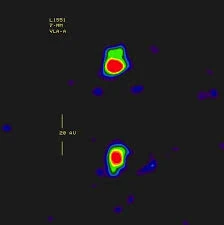
Preserving and excavating the vast Terracotta Army has presented its fair share of challenges. The delicate nature of the ancient clay soldiers requires meticulous attention to detail to ensure their longevity. One of the primary concerns is the preservation of the soldiers’ vivid colors, which fade rapidly upon exposure to air and light. To combat this, archeologists have developed specialized techniques using advanced technology and materials to protect the vibrant pigments. Additionally, the excavation process itself poses obstacles as the army is intricately interconnected underground, making it a delicate task to extract individual soldiers without causing damage. The complexity of the site, coupled with the fragility of the artifacts, demands the expertise of skilled professionals. Despite these challenges, ongoing preservation efforts and advancements in excavation methods continue to reveal the awe-inspiring magnificence of the Terracotta Army, ensuring that its legacy remains intact for future generations to marvel at. While the preservation and excavation challenges of the Terracotta Army may not directly link to Egyptian folklore or the mystery of comets’ path and behavior, they highlight the importance of safeguarding ancient treasures and the significance of scientific advancements in ensuring their preservation and accessibility.
Modern-Day Implications
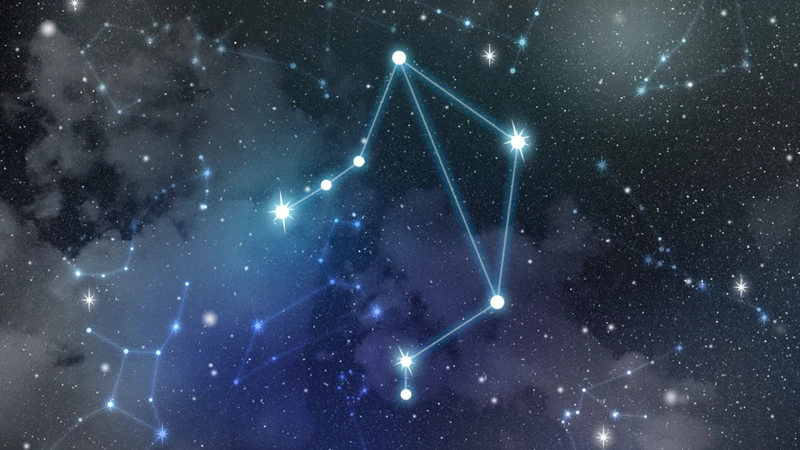
The modern-day implications of the Terracotta Army stretch far beyond the realm of mythology and archaeology. The discovery of this ancient army has had a profound impact on China’s cultural heritage. It serves as a powerful symbol of national pride and is a testament to the rich history of the country. Additionally, the Terracotta Army has become a major tourist attraction, drawing visitors from around the globe who are eager to witness the magnificence of this archaeological wonder firsthand. This influx of tourism has not only bolstered the local economy but also provided opportunities for cultural exchange and appreciation. As we marvel at the intricacies of the army, it’s fascinating to contemplate its potential connections to other ancient civilizations, such as the mythical creatures of Egyptian folklore or the mysteries surrounding the path and behavior of comets. These interconnections point to the universal nature of human curiosity and the profound impact of ancient wonders on our collective consciousness.
Cultural Heritage
The Terracotta Army stands as a testament to China’s rich cultural heritage. These remarkable clay soldiers not only reflect the artistic and architectural prowess of the time, but they also offer valuable insights into the beliefs, customs, and rituals of ancient Chinese civilization. The army’s discovery has provided archaeologists and historians with a wealth of knowledge about the Qin Dynasty and its imperial aspirations. The intricate details of the soldiers’ attire, weapons, and hairstyles reveal the meticulous craftsmanship of the era. The preservation of this archaeological wonder serves as a reminder of the importance of cultural heritage in understanding and appreciating our past. As we unravel the mysteries of the Terracotta Army, it is intriguing to consider the parallels with other cultures and their mythical creatures, such as in Egyptian folklore, or the cosmic connections suggested by the mystery of comets’ path and behavior. The preservation of this cultural heritage allows us to celebrate the ingenuity and creativity of ancient civilizations and fosters a deeper appreciation for the diversity and interconnectedness of human history.
Tourism and Economy
Tourism and Economy
The discovery of the Terracotta Army has had a profound impact on both tourism and the economy of the surrounding region. Since its excavation, millions of visitors from around the globe have flocked to the Museum of the Terracotta Army in Xi’an, China, eager to witness this remarkable archaeological wonder. The influx of tourists has brought significant economic growth to the region, as hotels, restaurants, and souvenir shops cater to the needs of visitors. Tourists can admire the army’s intricate details and marvel at the individuality of each soldier, perhaps contemplating the connections between this ancient Chinese artifact and the mythical creatures of Egyptian folklore. The terracotta warriors stand as a testament to the rich cultural heritage of China, captivating the hearts and minds of all who encounter them. The site’s popularity has even led to the construction of a dedicated museum and exhibition center, providing a comprehensive experience for visitors. The economic impact of this historical treasure cannot be overstated as it continues to draw international attention and contribute to the local economy, just as comets’ erratic path and behavior capture the curiosity of astronomers and enthusiasts alike. The Terracotta Army is not only a cultural and historical wonder but also a powerful catalyst for tourism and economic development.
The Terracotta Army’s Legacy
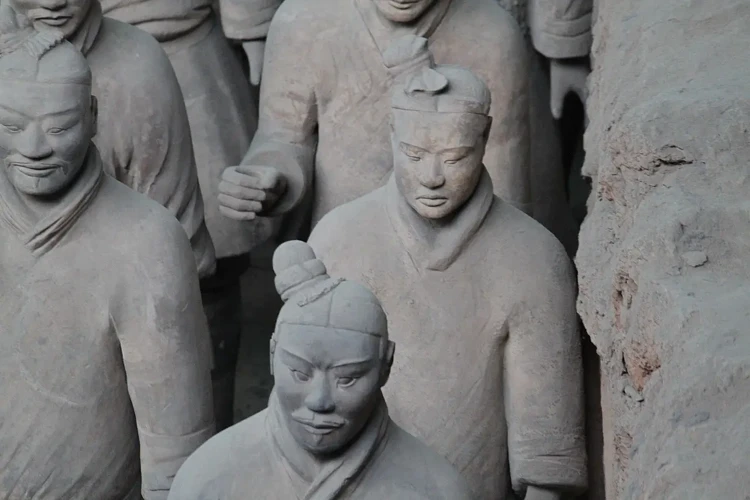
The legacy of the Terracotta Army extends far beyond its archaeological significance. This remarkable collection of clay soldiers has left an indelible mark on history, culture, and the world at large. One of the most profound aspects of its legacy lies in the realm of cultural heritage. The Terracotta Army stands as a testament to the craftsmanship, artistic prowess, and engineering ingenuity of the ancient Chinese civilization. It serves as a tangible link to the past, allowing us to glimpse into the lives and beliefs of the people who created it. Additionally, the discovery of the army has transformed the region into a thriving tourist destination, boosting the local economy and promoting cultural exchange. Visitors from across the globe flock to witness this awe-inspiring spectacle, further perpetuating its legacy. The Terracotta Army has sparked curiosity and scholarly discourse, fueling research and studies not only about ancient China but also fostering connections with other ancient civilizations and their folklore, such as Egyptian folklore and mythical creatures, or even the enigmatic mystery of comets’ path and behavior. The ongoing exploration of its legacy continues to captivate and inspire, ensuring that the Terracotta Army remains an enduring symbol of humanity’s rich past and limitless imagination.
Conclusion
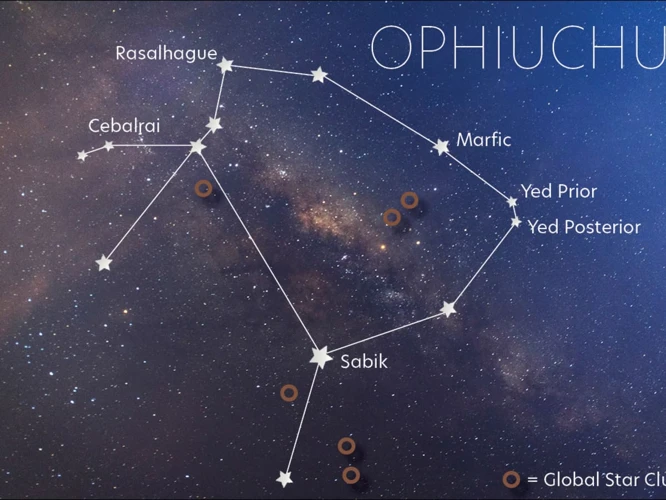
In conclusion, the Terracotta Army stands as a testament to the rich mythology and cultural heritage of ancient China. The mythical origins, intertwined with the historical narrative, create a captivating story that continues to intrigue scholars and visitors from around the world. The discovery of this remarkable army has shed light on the beliefs and aspirations of Qin Shi Huang, the first emperor of China, as he sought immortality and protection in the afterlife. The intricate details of each soldier, the horse contingent, and the weapons and armor provide a glimpse into the artistry and skill of the artisans who created them. The preservation and excavation challenges faced by archaeologists add to the mystique surrounding these clay warriors. Today, the Terracotta Army has become a symbol of Chinese cultural heritage, drawing millions of tourists and contributing to the economy through tourism. As we contemplate the legacy of the Terracotta Army, it serves as a reminder of the interconnectedness of ancient civilizations, sparking our curiosity to explore the mythical creatures of Egyptian folklore or unravel the mysteries of comets’ path and behavior, which are subjects that continue to captivate our imagination. The Terracotta Army invites us to appreciate the depth and beauty of human history, urging us to seek answers to the puzzles that have endured through the ages.
Frequently Asked Questions

FAQs about the Terracotta Army in Chinese Mythology
1. What is the significance of the Terracotta Army in Chinese mythology?
The Terracotta Army holds great importance in Chinese mythology as it was believed to serve as protection for Emperor Qin Shi Huang in the afterlife.
2. How did the Terracotta Army come into existence?
According to legends, the army was created at the command of Emperor Qin Shi Huang, who sought immortality and protection in the underworld.
3. Were the soldiers in the Terracotta Army based on real individuals?
The soldiers in the army were not based on specific individuals. Instead, they were made to represent a collective force, loyal to the emperor.
4. Are there any hidden messages or symbols in the Terracotta Army?
While there are no confirmed hidden messages, legends suggest that celestial visions and planetary symbols guided the creation of the army.
5. How were the soldiers in the Terracotta Army made?
The soldiers were made using clay and were meticulously crafted by skilled artisans. Each soldier was individually sculpted to exhibit unique facial features and expressions.
6. What was the purpose of the horse contingent in the Terracotta Army?
The horse contingent was included in the army to provide mobility and support for the infantry. Horses were considered essential for warfare during that time.
7. What types of weapons and armor did the Terracotta Army possess?
The soldiers were equipped with a range of weapons, including spears, swords, and crossbows. Their armor consisted of earthenware plates and leather.
8. How were the intricate details of the Terracotta Army preserved?
The details of the army were preserved through careful craftsmanship and the use of various pigments and lacquers to enhance the color and durability of the clay.
9. Were there any challenges faced during the excavation of the Terracotta Army?
Yes, excavating the Terracotta Army presented numerous challenges, including the fragility of the artifacts, the complexity of the site, and the vast scale of the army.
10. How has the discovery of the Terracotta Army impacted Chinese culture and tourism?
The discovery has had a significant impact on Chinese culture, showcasing the rich history and artistic achievements of ancient China. It has also become a major tourist attraction, attracting visitors from all over the world and contributing to the local economy.
References
Frequently Asked Questions

1. What is the significance of the Terracotta Army in Chinese mythology?
The Terracotta Army holds great significance in Chinese mythology as it is believed to be linked to the ancient emperor’s quest for immortality and the protection of his afterlife.
2. How were the warriors of the Terracotta Army created?
The warriors were meticulously crafted by skilled artisans using clay and other materials. Each warrior was individually designed and sculpted, showcasing the extraordinary craftsmanship of ancient Chinese artists.
3. What is the purpose of the Terracotta Army in Chinese mythology?
The Terracotta Army served multiple purposes in Chinese mythology. It was created to accompany the emperor in the afterlife, protect him from evil spirits, and symbolize the authority and power of the emperor.
4. What do the warriors of the Terracotta Army symbolize?
The warriors symbolize the strength, loyalty, and bravery of the ancient Chinese military. They represent the emperor’s desire for eternal protection and serve as a reminder of the might of the Qin Dynasty.
5. How many warriors are there in the Terracotta Army?
The Terracotta Army is estimated to consist of over 8,000 life-sized warriors, including infantry, archers, cavalry, and officers. However, excavation work is still ongoing, and more warriors could be discovered in the future.
6. What are some unique details about the individual soldiers of the Terracotta Army?
Each soldier in the Terracotta Army has distinct facial features, hairstyles, and armor, making them truly unique. Their clothing and accessories also vary, reflecting the ranks and positions they held in the emperor’s military hierarchy.
7. Why were horses included in the Terracotta Army?
Horses were an integral part of ancient Chinese warfare, so they were included in the Terracotta Army to support and strengthen the military force. The horses depict different breeds and are intricately carved with detailed saddlery and harnessing.
8. What weapons and armor did the soldiers of the Terracotta Army possess?
The soldiers of the Terracotta Army were equipped with various weapons, including swords, spears, bows, and arrowheads. Their armor consisted of bronze helmets, protective vests, and other defensive gear, highlighting the advanced military technology of the time.
9. What challenges were faced during the preservation and excavation of the Terracotta Army?
Preserving and excavating the Terracotta Army posed several challenges, such as preventing clay deterioration, controlling humidity levels, and safeguarding against environmental factors. The fragile nature of the warriors required careful restoration and conservation efforts.
10. What is the cultural and economic significance of the Terracotta Army today?
The Terracotta Army holds immense cultural value as a UNESCO World Heritage Site and is a significant tourist attraction, bringing visitors from all over the world to China. It also contributes to the local economy through tourism, providing employment opportunities and generating revenue.
References
- Unveiling the Mysteries of the Terracotta Army: China’s Silent …
- The Mysteries of the Chinese Terracotta Warriors







